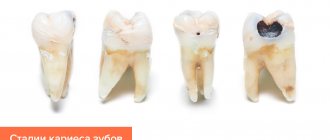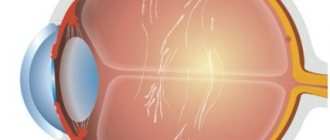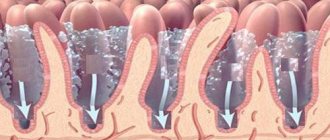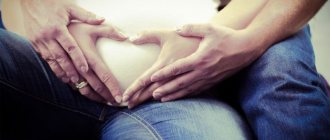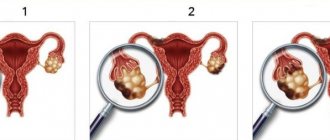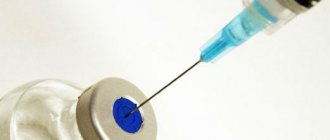Cerebral palsy is a group of diseases in which motor functions and posture are impaired. This is due to a brain injury or a disorder of brain formation. This disease is one of the most common causes of permanent disability in children. Cerebral palsy occurs in approximately 2 cases per thousand people.
Cerebral palsy causes reflex movements that a person cannot control and tightness of the muscle, which can affect part or all of the body. These disorders can range from moderate to severe. There may also be intellectual disability, seizures, visual and hearing impairment.
Accepting the diagnosis of cerebral palsy can sometimes be a difficult task for parents.
Causes
Cerebral palsy (CP) is the result of injury or abnormal development of the brain. In many cases, the exact cause of cerebral palsy is not known. Damage or disruption of brain development can occur during pregnancy, birth, and even during the first 2 to 3 years after birth.
- Possible causes of cerebral palsy during pregnancy or birth may be genetic problems, infections or health problems in the mother or fetus during pregnancy, or complications associated with labor and delivery. Any of these problems can affect the development of the fetus, blood supply, and the provision of the fetus with the necessary nutrients that it receives through the blood. For example, systematic hypoglycemia can lead to the development of cerebral palsy.
- One possible cause of cerebral palsy may be prematurity associated with early birth (preterm birth), and therefore underdevelopment of the brain. Babies born too early are at high risk of bleeding in the brain (intraventricular hemorrhage). A condition called periventricular leukomalacia, which causes damage to the white matter of the brain, is also more likely in babies born prematurely than in those born full term. Both conditions increase the risk of cerebral palsy. • Possible causes of cerebral palsy during the first 2 or 3 years after birth are usually related to brain damage from a serious illness such as meningitis; brain injury due to an accident or brain hypoxia.
Prevention
The cause of cerebral palsy (CP) is sometimes unknown. But certain risk factors have been identified and their relationship with the incidence of cerebral palsy has been proven. Some of these risk factors can be avoided. Following certain conditions during pregnancy can help reduce the risk of brain damage to the fetus. These recommendations include:
- Complete nutrition.
- No smoking.
- Do not come into contact with toxic substances
- Regularly see your doctor.
Recommendations after the birth of the child:
- Minimize injury from accidents
- Determine neonatal jaundice
- Do not use substances containing heavy metals (lead)
- Isolate the child from patients with infectious diseases (especially meningitis)
- Immunize the child in a timely manner.
Factors influencing the child's will
Factors influencing the will of the child can be divided into:
- external, which include the conditions and nature of the disease, the attitude of others towards the sick child;
- and internal ones, such as the child’s attitude towards himself and his own illness.
Weakness of will in most children suffering from cerebral palsy is directly related to the characteristics of their upbringing. Very often in a family with a sick child, one can observe the following picture: the attention of loved ones is focused exclusively on his illness, parents show concern about every issue, limit the child’s independence, fearing that he may get hurt or fall, or be awkward. In such a situation, the child himself will inevitably be overly restless and anxious. Even infants subtly feel the mood of loved ones and the atmosphere of the space around them, which are fully transmitted to them. This axiom is true for all children - both sick and healthy. What can we say about children suffering from musculoskeletal disorders, who are distinguished by increased impressionability and acuteness of feelings?
Or another picture: an unhappy mother who, while caring for her child, forgets about her own life and becomes a hostage to illness. She looks tired and unhappy. But any child needs a happy mother, capable of giving love and warmth, and not her health and nerves. For a sick baby, this need is a thousand times greater.
All this leads to the fact that the child grows up lacking initiative, unsure of his strengths and capabilities, and timid. He resigns himself to his illness and does not strive for independence. He expects in advance that those around him will do everything for him. Over time, the child gets used to this state of affairs and finds it comfortable. And from here comes a pronounced egocentrism, the desire to manipulate people.
The importance of the educational position of parents in relation to children with cerebral palsy is confirmed by the fact that the children among them with a high level of volitional development come from families that are prosperous in terms of the psychological climate. In such families, parents are not fixated on the child’s illness. They stimulate and encourage his independence within acceptable limits. They try to form adequate self-esteem in the child. Their attitude can be expressed by the formula: “If you are not like others, this does not mean that you are worse.”
We must not lose sight of the child’s own attitude towards the illness. It is obvious that he is also significantly influenced by the situation in the family. Studies have shown that awareness of the defect in children with cerebral palsy manifests itself by the age of 7-8 years and is associated with their worries about the unkind attitude of others and lack of communication.
Children can react to the current situation in different ways:
- the child withdraws into himself, becomes overly timid, vulnerable, and strives for solitude;
- the child becomes aggressive and easily enters into conflict.
The difficult task of forming a child’s attitude towards his own physical defect again falls on the shoulders of the parents. Obviously, this difficult period of development requires special patience and understanding from them. The help of specialists should not be neglected. For example, it is quite possible to overcome a child’s worries about his appearance thanks to well-organized psychological work with him.
Thus, the characteristics of the development of the personality and emotional-volitional sphere of a child with cerebral palsy largely depend not only on the specifics of the disease, but primarily on the attitude of parents and relatives towards the child. Therefore, you should not assume that the reason for all the failures and difficulties of upbringing is the baby’s illness. Believe me, you have enough opportunities in your hands to make your baby a full-fledged personality and just a happy person.
Symptoms
Even when the condition is present at birth, symptoms of cerebral palsy (CP) may not be noticed until the child is between 1 and 3 years of age. This happens due to the growth characteristics of the child. Neither doctors nor parents may pay attention to disturbances in the child’s motor sphere until these disturbances become obvious. Children may retain newborn reflex movements without age-appropriate development of movement skills. And sometimes the first to pay attention to a child’s underdevelopment are nannies. If cerebral palsy is severe, then the symptoms of this disease are already detected in the newborn. But the appearance of symptoms depends on the type of cerebral palsy.
The most common symptoms of severe cerebral palsy are
- Swallowing and sucking problems
- Faint scream
- Cramps.
- Unusual child poses. The body can be very relaxed or very strong hyperextension with arms and legs spread out. These positions are significantly different from those that occur with colic in newborns.
Some problems associated with cerebral palsy become more obvious over time or develop as the child grows. These may include:
- Muscle wasting in injured arms or legs. Problems in the nervous system impair movement in the injured arms and legs, and muscle inactivity affects muscle growth.
- Pathological sensations and perceptions. Some patients with cerebral palsy are very sensitive to pain. Even normal everyday activities such as brushing your teeth can be painful. Pathological sensations may also affect the ability to identify objects by touch (for example, distinguish a soft ball from a hard one).
- Skin irritation. Drooling, which is common, can lead to irritation of the skin around the mouth, chin and chest.
- Dental problems. Children who have difficulty brushing their teeth are at risk for gum disease and tooth decay. Medicines used to prevent seizures may also contribute to the development of gum disease.
- Accidents. Falls and other accidents are risks associated with impaired coordination of movements, as well as in the presence of convulsive attacks.
- Infections and somatic diseases. Adults with cerebral palsy are at high risk of heart and lung diseases. For example, in severe cases of cerebral palsy, problems arise with swallowing and when choking, some of the food enters the trachea, which contributes to lung diseases (pneumonia).
All patients with cerebral palsy (cerebral palsy) have certain problems with body movement and posture, but many babies do not show signs of cerebral palsy at birth and sometimes only nannies or caregivers are the first to pay attention to deviations in the child’s movements that contradict age criteria. Signs of cerebral palsy may become more obvious as the child grows. Some developing disorders may not become apparent until after the child's first year. The brain injury that causes cerebral palsy does not appear for a long time, but the effects may appear, change, or become more severe as the child gets older.
The specific effects of cerebral palsy depend on its type and severity, level of mental development and the presence of other complications and diseases.
- The type of cerebral palsy determines the child's motor impairment.
Most patients with cerebral palsy have spastic cerebral palsy. Its presence can affect both all parts of the body and individual parts. For example, a child with spastic cerebral palsy may have symptoms primarily in one leg or one side of the body. Most children usually try to adapt to impaired motor functions. Some patients can even live independently and work, requiring only occasional assistance from others. In cases where there are impairments in both legs, patients require a wheelchair or other devices that compensate for motor functions.
Complete cerebral palsy causes the most severe problems. Severe spastic cerebral palsy and choreoathetoid cerebral palsy are types of complete paralysis. Many of these patients are unable to care for themselves due to both motor and intellectual impairments and require constant care. Complications such as seizures and other long-term physical consequences of cerebral palsy are difficult to predict until the child is 1 to 3 years old. But sometimes such predictions are not possible until the child reaches school age, and in the process of studying, communicative intellectual and other abilities can be analyzed
- The severity of mental impairment, if any, is a strong predictor of daily functioning. Slightly more than half of patients who have cerebral palsy have some degree of intellectual disability. Children with spastic quadriplegia usually have severe cognitive impairment.
- Other conditions, such as hearing impairments or problems, often occur with cerebral palsy. Sometimes these disorders are noted immediately; in other cases they are not detected until the child gets older.
In addition, just like people with normal physical development, people with cerebral palsy experience social and emotional problems throughout their lives. Since their physical defects exacerbate problems, patients with cerebral palsy need the attention and understanding of other people.
Most patients with cerebral palsy survive to adulthood, but their life expectancy is somewhat shorter. Much depends on how severe the form of cerebral palsy is and the presence of complications. Some patients with cerebral palsy even have the opportunity to work, especially with the development of computer technology, such opportunities have increased significantly.
Cerebral palsy is classified according to the type of body movement and posture problem.
Spastic (pyramidal) cerebral palsy
Spastic cerebral palsy is the most common type. A patient with spastic cerebral palsy develops stiff muscles in some parts of the body that are unable to relax. Contractures occur in damaged joints, and the range of movements in them is sharply limited. In addition, patients with spastic cerebral palsy have problems with coordination of movements, speech disorders and disturbances in swallowing processes.
There are four types of spastic cerebral palsy, grouped according to how many limbs are involved. Hemiplegia - one arm and one leg on one side of the body or both legs (diplegia or paraplegia). They are the most common types of spastic cerebral palsy.
- Monoplegia: Only one arm or leg is impaired.
- Quadriplegia: Both arms and both legs are involved. Usually in such cases there is damage to the brain stem and, accordingly, this is manifested by swallowing disorders. In newborns with quadriplegia, there may be disturbances in sucking, swallowing, weak crying, and the body may be weak or, on the contrary, tense. Often, upon contact with a child, hypertonicity of the torso appears. The child may sleep a lot and not show interest in his surroundings.
- Triplegia: Either both arms and one leg or both legs and one arm are caused.
Non-spastic (extrapyramidal) cerebral palsy
Non-spastic forms of cerebral palsy include dyskinetic cerebral palsy (divided into athetoid and dystonic forms) and ataxic cerebral palsy.
- Dyskinetic cerebral palsy is associated with muscle tone that ranges from moderate to severe. In some cases, there are uncontrollable jerks or involuntary slow movements. These movements most often involve the muscles of the face and neck, arms, legs, and sometimes the lower back. The athetoid type (hyperkinetic) type of cerebral palsy is characterized by relaxed muscles during sleep with minor twitching and grimacing. If the muscles of the face and mouth are involved, there may be disturbances in the process of eating, drooling, choking on food (water) and the appearance of inappropriate facial expressions.
- Ataxic cerebral palsy is the rarest type of cerebral palsy and affects the entire body. Pathological movements occur in the torso, arms and legs.
Ataxic cerebral palsy is manifested by the following problems:
- Body imbalance
- Impaired precise movements. For example, the patient cannot reach the desired object with his hand or perform even simple movements (for example, bringing a cup directly to the mouth). Often only one hand is able to reach the object; the other hand may shake as it tries to move the object. The patient is often unable to button clothes, write, or use scissors.
- Coordination of movements. A person with ataxic cerebral palsy may walk with too long steps or with their feet spread wide apart.
- Mixed cerebral palsy
- Some children have symptoms of more than one type of cerebral palsy. For example, spastic legs (symptoms of spastic cerebral palsy related to diplegia) and problems with facial muscle control (symptoms of dyskinetic CP).
- Total body cerebral palsy affects the entire body to varying degrees. Complications from cerebral palsy and other health problems are most likely to develop when the entire body is involved rather than isolated parts.
Psycho-emotional and personal development of the child
The degree to which a child’s psycho-emotional development deviates from normal indicators depends on many factors. And first of all, this is the mental development of the child and the degree of damage to his brain. However, the attitude of the people around the child is no less important.
Psycho-emotional abnormalities in children with cerebral palsy can manifest themselves in different ways. Thus, some children are overly irritable, excitable, and are characterized by sudden changes in mood throughout the day.
Some guys, on the contrary, are shy, fearful, they have difficulty making contact with others, and do not show initiative in their actions.
Most children are characterized by delayed mental development of the infantilism type. This means that they exhibit underdevelopment of the emotional-volitional sphere of personality.
Intelligence in such cases may correspond to the norm. However, it is the emotional sphere that is revealed to be immature.
Parents of a sick child should know that all responsibility for his mental development, for the formation of his character, etc. lies with them. Excessive care and compassion will ultimately lead to the fact that he will withdraw into himself even more and will not develop as a person.
Diagnostics
Symptoms of cerebral palsy may not be present or detected at birth. Therefore, the attending physician observing the newborn must carefully monitor the child so as not to miss symptoms. However, you should not over-diagnose cerebral palsy, since many motor disorders in children of this age are transient. Often, the diagnosis can only be made several years after the birth of the child, when movement disorders can be noticed. Diagnosis of cerebral palsy is based on monitoring the physical development of the child, the presence of various deviations in physical and intellectual development, test data and instrumental research methods such as MRI. Diagnosis of cerebral palsy includes:
- Gathering information about the baby's medical history, including details about the pregnancy. Quite often, the presence of developmental delay is reported by parents themselves or it is revealed during professional examinations in children's institutions.
- A physical examination is necessary to identify signs of cerebral palsy. During a physical examination, the doctor evaluates how long the baby's newborn reflexes last compared to normal periods. In addition, muscle function, posture, hearing function, and vision are assessed.
- Tests to detect a latent form of the disease. Developmental questionnaires and other tests help determine the extent of developmental delays.
- Magnetic resonance imaging (MRI) of the head, which may be done to identify abnormalities in the brain.
The complex of these diagnostic approaches makes it possible to make a diagnosis.
If the diagnosis is unclear, additional tests may be ordered to evaluate the condition of the brain and to rule out possible other diseases. Tests may include:
- Additional questionnaires.
- Computed tomography (CT) of the head.
- Ultrasound examination of the brain.
Assessment and management of cerebral palsy
After cerebral palsy is diagnosed, the child must be further examined and other diseases that may be present simultaneously with cerebral palsy be identified.
- Other developmental delays in addition to those already identified. Developing abilities need to be assessed periodically to see if new symptoms such as speech delay appear as the child's nervous system is continually developing.
- Intellectual delay can be detected using certain tests.
- Convulsive episodes. Electroencephalography (EEG) is used to look for abnormal activity in the brain if a child has a history of seizures.
- Problems with feeding and swallowing.
- Vision or hearing problems.
- Behavior problems.
Most often, a doctor can predict many of the long-term physical aspects of cerebral palsy when the child is between 1 and 3 years old. But sometimes such predictions are not possible until the child reaches school age, when deviations can be detected during learning and the development of communication abilities.
Some children need repeat testing, which may include:
- X-rays to detect hip dislocations (subluxations). Children with cerebral palsy usually undergo several x-rays between the ages of 2 and 5 years. In addition, x-rays may be ordered if there is pain in the hips or if there are signs of hip dislocation. It is also possible to order a spinal x-ray to identify deformities in the spine.
- Gait analysis, which helps identify disorders and adjust treatment tactics.
Additional examination methods are prescribed if necessary and indicated.
The nature of children's behavior
In cases of mental development disorders associated with cerebral palsy, the following features in the behavior of children are observed:
- the child is guided mainly by emotions associated with pleasure;
- Children with cerebral palsy are characterized by egocentricity;
- they cannot work purposefully in a team;
- they do not know how to correlate their own interests with the interests of the people around them;
- there are elements of infantility in behavior;
- even at high school age, such children have an increased interest in games;
- they are extremely suggestible, incapable of volitional efforts on themselves;
- behavior is also characterized by instability of emotions, disinhibition;
- children tend to get tired quickly;
- they have difficulty adapting to new conditions, they have various fears - most often fear of heights, darkness, etc.;
- children are very sensitive to the mood and behavior of others, which is reflected in increased impressionability: incidents that are neutral for other children can cause a violent reaction in them.
- Sleep disturbances, nightmares, and nighttime anxiety are common.
Treatment
Cerebral palsy is an incurable disease. But a variety of treatment methods help patients with cerebral palsy to minimize motor and other disorders and, thus, improve their quality of life. The brain injury or other factors that lead to cerebral palsy do not progress, but new symptoms may appear or progress as the child grows and develops.
Initial (initial) treatment
Exercise therapy is an important part of treatment that begins soon after a child is diagnosed and often continues throughout his or her life. This type of treatment may also be prescribed before diagnosis, depending on the child's symptoms.
Medications can help treat some of the symptoms of cerebral palsy and prevent complications. For example, antispasmodics and muscle relaxants help relax tight (spastic) muscles and increase range of motion. Anticholinergics can help improve limb movement or reduce drooling. Other medications may be used as symptomatic treatment (eg, anticonvulsants for seizures)
Permanent treatment
Permanent treatment for cerebral palsy (CP) focuses on continuing and adjusting existing treatment and adding new treatments as needed. Permanent treatment for cerebral palsy may include:
- Exercise therapy that can help a child become as mobile as possible. It may also help prevent the need for surgery. If the child has undergone surgical treatment, then intensive exercise therapy may be necessary for 6 months or more. Drug treatment must be constantly monitored in order to avoid possible side effects of drugs.
- Orthopedic surgery (for muscles, tendons, and joints) or dorsal rhizotomy (excision of nerves of damaged limbs), in the presence of severe problems with bones and muscles, ligaments, and tendons.
- Special orthopedic devices (braces, splints, orthoses).
- Behavioral therapy, in which a psychologist helps a child find ways to communicate with peers and this is also part of the treatment.
- Massage and manual therapy can also be used in the treatment of both the main symptoms of cerebral palsy and complications associated with impaired biomechanics of movement.
- Social adaptation. Modern technologies (computers) have made it possible to employ many patients with consequences of cerebral palsy.
Practical recommendations
- If your child has sleep disturbances, try to adjust his daily routine. It is necessary to create a calm environment for him, to refuse overly active, noisy games before bedtime. As far as possible, reduce the effect of external stimuli on his senses. Stop listening to music, or let it be soft, unobtrusive instrumental compositions. (Songs with lyrics in a language familiar to the child will be an additional burden for perception, and, therefore, another irritant that prevents the child from relaxing and falling asleep.) Limit watching TV.
- In order for a child to develop an adequate assessment of himself and the world, parents and loved ones, it is necessary to abandon excessive guardianship towards him. The strength of the child’s volitional qualities will depend on how the family perceives the child – as a disabled person who is unable to achieve success in life, or as a person, albeit in some ways different from those around him, but taking an active life position.
- If in the process of working with a child you notice that he is tired - has become irritable, aggressive, or, on the contrary, is overly withdrawn - you should not try to continue working. In order for work with a child to be fruitful, he himself must first of all be interested in it. It's better to take a break, offer him something to play, or just leave him alone for a while. It is likely that after some time the baby will regain energy, and you will be able to continue your activities with renewed vigor.
Why a regular school is not always suitable
Traditional public school is most often not suitable for children with disabilities, and here are the main reasons:
- the infrastructure of the school grounds and classrooms may not be suitable, for example, there are often no ramps and elevators;
- the pace of study brings discomfort and takes a lot of energy, for example, in high school the daily schedule consists of 7-8 lessons;
- The format of a public school does not allow a child to be productive - the requirements of the program do not correlate with the student’s capabilities, and children with disabilities may find it more difficult to write by hand, keep up with the teacher’s speaking speed, or focus on one task for a long time.
Distance learning for children with disabilities can solve these problems, as it makes the educational process more individualized. An online school can adapt to the needs of a child with a disability and provide the most comfortable conditions for classes.
Extra education
In addition to the fact that a child needs to learn to read, write, and count, it is also necessary to develop his other skills, such as motor skills. For patients diagnosed with cerebral palsy, it is necessary to undergo regular massages, which eliminates pain from muscle tension. It is also necessary to learn to swim, which will have a positive effect on the development of the nervous system.
A diagnosis of cerebral palsy does not mean that your child will never learn to speak, wash himself, brush his teeth and understand others. It all depends on how it is dealt with, what programs and methods are used for development. But educational technologies do not stand still; a lot of programs have been invented for children with this diagnosis that are easy to use at home.
Small conclusion
Thus, inclusive education, at its core, is an excellent opportunity for children with special needs to enter an atmosphere of social communication. We can only hope that it will be fully implemented in the post-Soviet space.
The opportunity for different children, with different abilities, to be together, make friends, play, learn to help each other, take care of each other and understand that all people are different, but everyone lives together on the same Planet and under the same sky. It’s just that among them there are those who are the same as the others, only they have fewer opportunities, but they have the opportunity to say - I’m learning!
Motor disorders in cerebral palsy
- Violation of muscle tone (such as spasticity, rigidity, hypotension, dystonia).
- Restriction or impossibility of voluntary movements (paresis and paralysis).
- The presence of pathological tonic reflexes, pathological postures, movements, while the severity of tonic reflexes reflects the severity of the disease.
- Insufficient development of chain righting (statokinetic) reflexes (formation of vertical body position and voluntary motor skills).
- Violation of the sensations of movements - kinesthesia (involuntary friendly movements accompanying the performance of active voluntary movements).
- The presence of violent movements, hyperkinesis and tremor (shaking).
- Impaired balance and coordination of movements (ataxia), instability when sitting, standing and walking, inaccuracy, disproportion of movements (primarily of the hands).
Positive emotions
Social educators and psychologists are very good. You need to listen to their advice and draw conclusions. But the child also needs to be given the opportunity to go to church, where he will improve both in the short and long term. Christianity cannot be considered only as a moral teaching; it is also healing, both spiritual and very real, physical.
It is also very important for a child to expand his horizons. It’s good, of course, if you have a computer at home, and it can be used both for games and for learning and work. But we must not forget that children love to play with their peers. It would be good if he had friends, and real ones, and not through social networks. An ordinary club will not work, but perhaps in the city there is an opportunity to spend time with other children with cerebral palsy, and even better - with healthy children. Even if he cannot draw, sing, dance, sometimes it is enough just to look at other children from the outside, and not only new impressions and emotions will arise, but a desire to improve his own life will arise.
Going to exhibitions, theaters, performances, dance competitions, various crowded events, city holidays - this should be present in life on a regular basis. But man does not live by only one culture. No matter how difficult it may be, you need to get out into nature - fishing, a beach holiday by the river or local lake. If possible, organize a resort vacation. Of course, all this is problematic, but we must take into account that these efforts have a good effect not only on the child, but also on the parents - there is an opportunity to communicate more closely with the child, and his positive emotions, his joy will pass on to the father and mother, who, caring about the child, they automatically take care of themselves.
